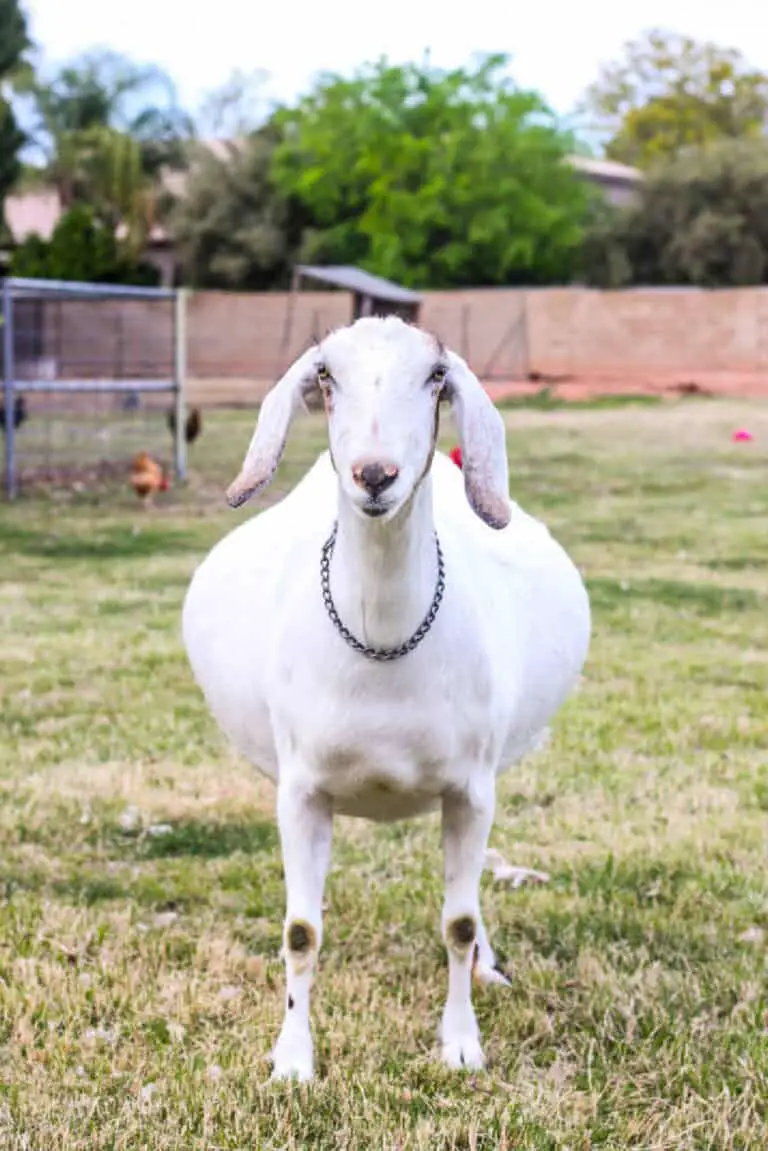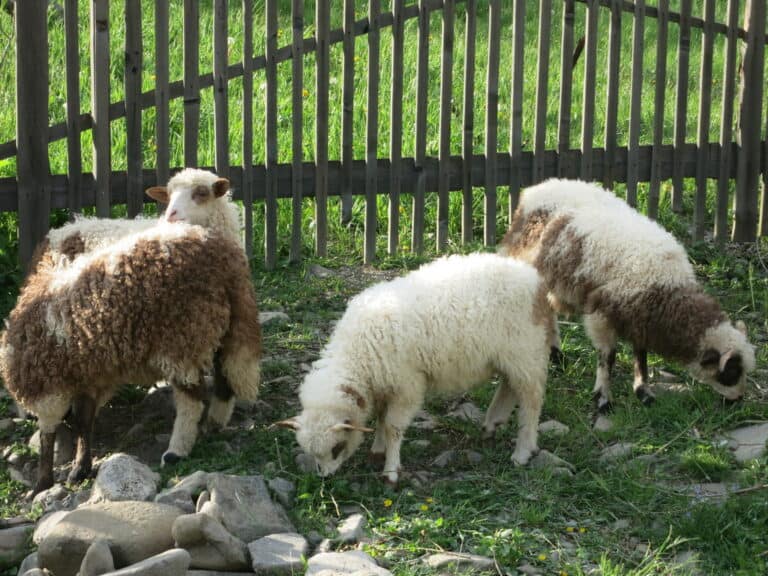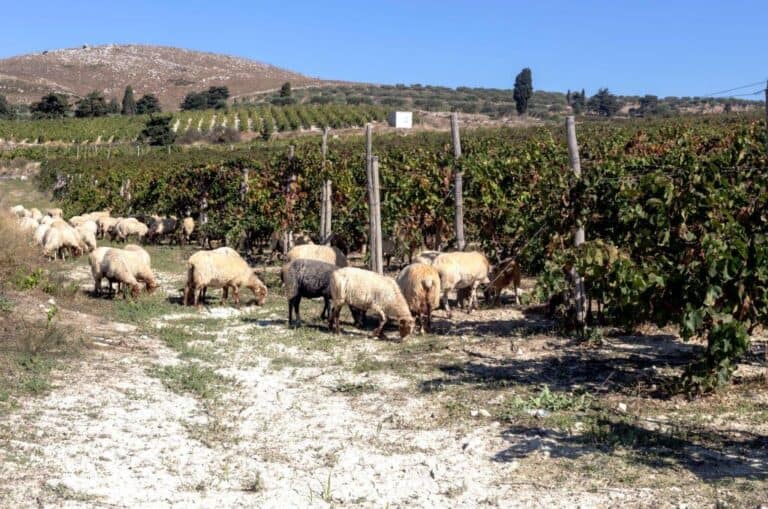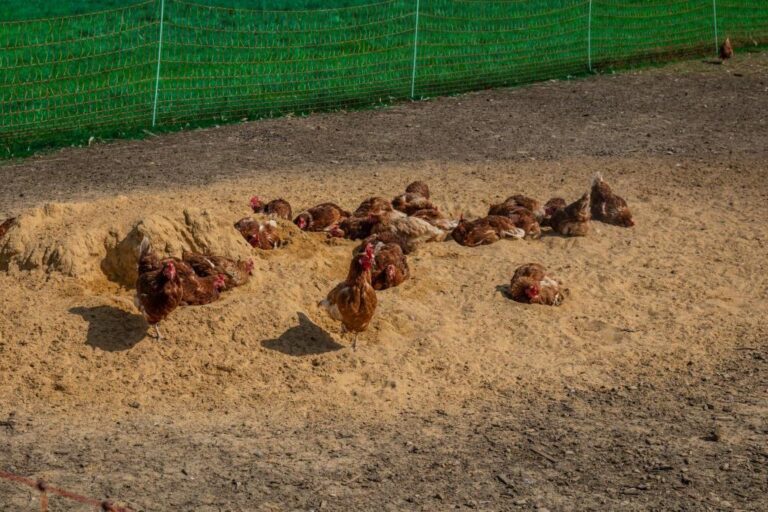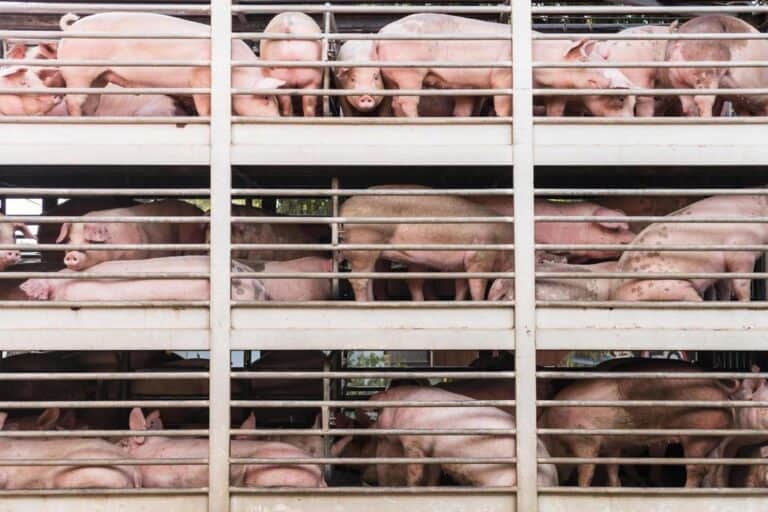Why Is Triticale Hay the Perfect Feed Option for Beef Cows?
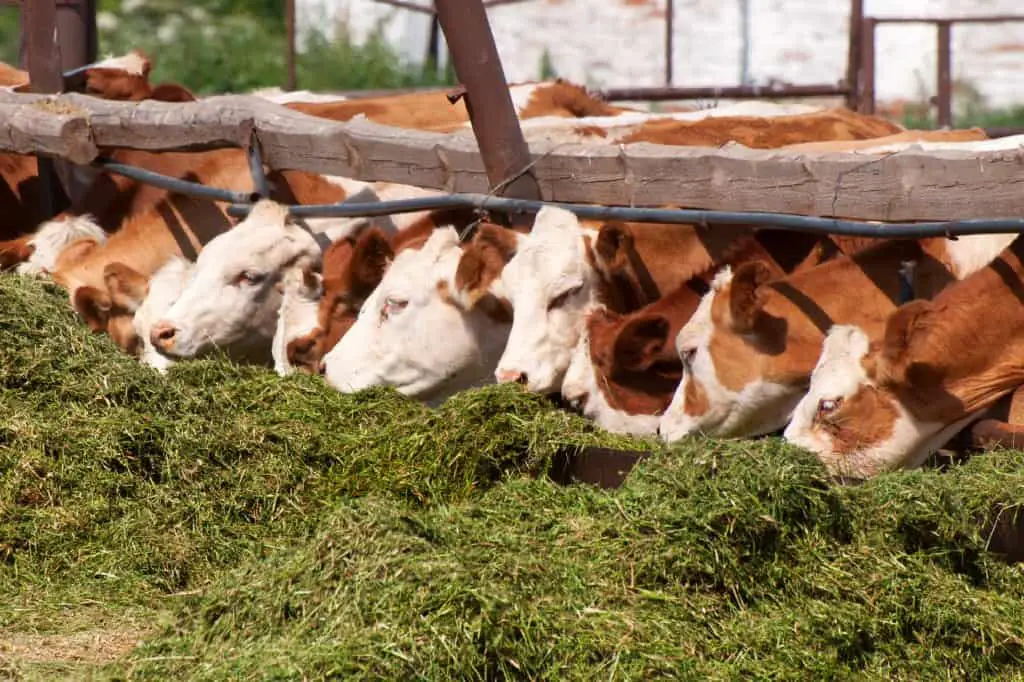
Are you a cattle farmer looking to provide your beef cows with the best nutrition? When it comes to raising healthy and productive beef cattle, a nutritious diet plays a pivotal role. Look no further than triticale hay, the perfect feed option for your herd.
Triticale hay is a highly nutritious feed option for beef cows. It offers a host of benefits, such as improved digestibility, enhanced weight gain, and cost-effectiveness. Additionally, it is versatile and easy to store, ensuring a steady supply even during low forage availability.
This article will explore the reasons why triticale hay is an excellent feed option for your beef cows. We will discuss its nutritional benefits, impact on weight gain and body condition, digestive health advantages, cost-effectiveness, storage requirements, and more.
Get ready to revolutionize your beef cow’s diet and witness the remarkable results of incorporating triticale hay into their feeding regimen.
What is Triticale Hay?
Triticale hay is a valuable forage option that combines the desirable traits of both wheat and rye. Derived from a hybridization process between these two grains, triticale offers unique characteristics that make it a versatile and nutritious feed for livestock. This hybrid grain possesses the high yield potential and adaptability of wheat, coupled with the hardiness and disease resistance of rye.
One of the defining features of triticale hay is its impressive nutritional profile. It provides a well-balanced blend of essential nutrients, making it a valuable component of livestock diets.
In terms of palatability, triticale hay is generally well-received by various livestock species. Its appealing taste and texture make it an enticing option for animals, encouraging proper forage consumption. Additionally, triticale hay’s high leaf-to-stem ratio contributes to its palatability, as the leaves contain a significant portion of the hay’s nutrients.
The cultivation of triticale hay presents numerous advantages for both farmers and livestock. Triticale exhibits remarkable adaptability to diverse climatic conditions, allowing it to thrive in a wide range of environments.
This adaptability, combined with its disease resistance and relatively low input requirements, makes triticale a resilient and cost-effective forage option. Moreover, triticale’s ability to grow in less fertile soils further contributes to its appeal as a reliable feed source for livestock.
Beyond its nutritional and agronomic qualities, triticale hay serves as a sustainable and environmentally friendly choice. Its deep root system helps improve soil structure, reduce erosion, and enhance water retention. Furthermore, triticale’s efficient use of nitrogen and other nutrients minimizes the risk of nutrient leaching and potential environmental pollution.
Nutritional Value of Triticale Hay
Triticale hay is rich in essential nutrients that are vital for the health and growth of beef cows. It contains a balanced combination of carbohydrates, proteins, vitamins, and minerals. Here is a breakdown of the nutritional value of triticale hay:
1. Carbohydrates
Triticale hay provides a good source of energy for beef cows. The carbohydrates present in triticale hay are easily digestible, ensuring that the cows receive a steady supply of energy throughout the day.
2. Proteins
Proteins are essential for muscle development and overall growth. Triticale hay contains a higher protein content compared to other forage options. It typically contains protein levels ranging from 10% to 15%, supplying vital amino acids necessary for animal growth and development. This makes triticale hay an excellent choice for promoting muscle growth and maintaining the health of beef cows.
3. Vitamins and Minerals
Triticale hay is a rich source of vitamins and minerals that are necessary for the proper functioning of the cow’s body. It contains vitamins such as vitamin A, vitamin E, and vitamin K, along with minerals like calcium, phosphorus, and potassium. These nutrients help support the immune system, maintain healthy bones, and aid in various metabolic processes.
4. Fiber
Triticale hay is rich in fiber, aiding in proper digestion and rumen health. The abundance of fiber in triticale hay plays a vital role in promoting proper digestion and maintaining optimal rumen health in livestock.
Fiber is an essential component of an animal’s diet, particularly for ruminant animals such as cattle, sheep, and goats, which have a unique digestive system capable of breaking down fibrous plant material.
Benefits of Triticale Hay for Beef Cows
Triticale hay boasts impressive nutritional content, making it an ideal feed option for beef cows. It offers a well-balanced combination of protein, carbohydrates, fiber, vitamins, and minerals necessary for maintaining optimal cow health.
Compared to other common feed alternatives, triticale hay provides essential nutrients that align closely with the dietary requirements of beef cows. Let’s explore the specific benefits it offers beef cows:
1. Improved Digestibility
Triticale hay has a high digestibility rate, which means that the cow’s digestive system is able to easily absorb the nutrients it contains. The fiber content in triticale hay supports proper rumen function, aiding in the breakdown and fermentation of feed. This ensures that the cows can efficiently extract the maximum nutritional value from the feed, resulting in better overall health and productivity.
2. Enhanced Weight Gain
Feeding triticale hay to beef cows has shown remarkable effects on weight gain and body condition. The nutritional profile of triticale hay, coupled with its digestibility, promotes efficient utilization of nutrients by the cows. This leads to enhanced weight gain and improved body condition scores, ensuring that the cows are in prime condition for breeding or the market.
3. Balanced Nutrition
Triticale hay offers a well-balanced combination of carbohydrates, proteins, vitamins, and minerals. This balanced nutrition ensures that the cows receive all the necessary nutrients for their overall well-being. A proper diet plays a crucial role in preventing nutritional deficiencies and maintaining optimal health.
4. Cost-Effective Feed Option
Triticale hay is a cost-effective feed option for beef cows. It can be grown in various climates and requires less water and fertilizer compared to other forage crops. Additionally, the high yield potential of triticale makes it an economically viable choice for livestock farmers.
5. Versatile and Easy to Store
Triticale hay can be easily stored and preserved for long periods without losing its nutritional value. It can be baled and stored in barns or other suitable storage facilities. The versatility and ease of storage make triticale hay a convenient feed option for beef cows, especially during periods of low forage availability.
Is Triticale Hay Suitable for All Beef Cow Breeds?
When it comes to selecting the ideal forage for beef cow breeds, triticale hay emerges as a compelling option. Triticale exhibits characteristics that make it a suitable choice for many beef cow breeds.
However, we need to consider several factors to determine whether triticale hay is the right choice for your specific breed of beef cows.
First and foremost, the nutritional requirements of beef cow breeds should be taken into account. Different breeds have varying dietary needs based on factors such as size, age, stage of production (such as lactation or gestation), and overall body condition.
Another crucial aspect to consider is palatability. While triticale hay is generally well-received by many beef cow breeds, palatability can vary between individuals and regions.
Some breeds may readily consume triticale hay without hesitation, while others may show a preference for other forage options. It is recommended to introduce triticale hay gradually and monitor the acceptance and consumption levels of the cows. This allows for adjustments to the diet if necessary.
Furthermore, triticale hay’s availability and cost should be considered. The availability of triticale hay may vary depending on the region and local farming practices. It is important to assess whether triticale hay is readily accessible in your area and whether it aligns with your budget constraints.
Consulting with local agricultural experts or forage suppliers can provide valuable insights into the availability and cost of triticale hay in your specific location.
What Are the Storage Requirements for Triticale Hay?
When it comes to storing triticale hay, proper handling and storage practices are essential to preserve its quality and nutritional value. Triticale hay, like any other forage, requires specific storage conditions to maintain its palatability, prevent spoilage, and minimize the risk of mold or fungal growth.
One crucial aspect of storing triticale hay is ensuring that it is properly dried before baling and storage. Hay should be harvested when the moisture content is around 15% to 20% to prevent excessive dryness or moisture that can lead to mold growth or nutrient loss. Careful attention should be given to weather conditions during harvest to avoid baling hay that is overly wet or prone to spoilage.
Once baled, triticale hay should be stored in a dry and well-ventilated area. A well-ventilated barn or storage facility is essential to prevent the accumulation of moisture that can result in mold development. Adequate airflow around the bales helps to maintain dry conditions and reduce the chances of heat buildup or condensation.
It is important to stack the bales in a way that promotes airflow. Stacking bales on pallets or elevated platforms allows air to circulate beneath them, reducing the risk of moisture absorption from the ground. Leaving space between bales and ensuring they are not tightly packed together aids in airflow and prevents the formation of humid pockets that can encourage mold growth.
Protecting triticale hay from excessive exposure to sunlight is also crucial. Prolonged exposure to direct sunlight can lead to nutrient degradation and color fading. If storing hay outdoors, it is advisable to cover the stacks with a UV-resistant tarp or utilize hay storage structures that provide shade and protection from the elements.
To minimize the risk of fire, it is crucial to prevent the storage area from becoming a fire hazard. Keep the storage area free from flammable materials and ensure that there are no electrical or heat sources near the hay. It is advisable to have fire extinguishing equipment readily available in case of emergencies.
Proper storage practices extend beyond the initial storage period. When feeding triticale hay, it is essential to practice a first-in, first-out (FIFO) approach. Using the oldest bales first ensures that hay does not sit in storage for extended periods, reducing the risk of spoilage.
Conclusion
In conclusion, triticale hay is an excellent and perfect feed option for beef cows due to its numerous benefits and nutritional value. Its balanced combination of carbohydrates, proteins, vitamins, and minerals ensures that the cows receive optimal nutrition for their overall health and productivity.
The improved digestibility of triticale hay allows for efficient nutrient absorption, leading to better overall health and enhanced weight gain in beef cows. The high protein content promotes muscle development, helping the cows reach their desired weight faster and more effectively.
Not only is triticale hay nutritionally beneficial, but it is also a cost-effective feed option. Its ability to grow in various climates and its low water and fertilizer requirements make it an economically viable choice for livestock farmers. Additionally, its versatility and ease of storage make it a convenient feed option, especially during periods of low forage availability.
When it comes to raising beef cows, providing them with a nutritious and balanced diet is crucial. Triticale hay offers the perfect combination of nutrients, digestibility, and cost-effectiveness, making it an ideal feed option for beef cows. By incorporating triticale hay into their feeding regimen, farmers can ensure the health, growth, and productivity of their beef cattle.
FAQs
Can triticale hay be fed to calves and young cattle?
Yes, triticale hay can be included in the diet of calves and young cattle. However, you need to consider their specific nutritional requirements and consult with a veterinarian to ensure their proper growth and development.
How should triticale hay be introduced into a cow’s diet?
When introducing triticale hay into a cow’s diet, it is recommended to do so gradually. Start by mixing small amounts with their current feed and gradually increase the proportion over several days to allow the cows to adjust to the new feed.
Is triticale hay suitable for organic beef production?
Yes, triticale hay can be used in organic beef production. However, it is important to ensure that the triticale hay is grown following organic farming practices and meets the organic certification requirements.
What is the shelf life of triticale hay?
The shelf life of triticale hay depends on several factors, including the initial moisture content, storage conditions, and the presence of pests. When stored properly in a dry, well-ventilated area, triticale hay can maintain its quality for up to 12 months or longer. Regular inspection and monitoring are essential to detect any signs of spoilage or degradation.
Does triticale hay require any specific processing or treatment before feeding?
Triticale hay generally does not require extensive processing or treatment before feeding. However, it is crucial to ensure that the hay is free from molds, dust, and foreign objects. Proper storage and handling practices, such as minimizing exposure to moisture and pests, can help maintain the quality of triticale hay.
Can triticale hay be used as a sole feed option for beef cows?
While triticale hay provides many nutritional benefits, it is generally recommended to offer a well-balanced diet to beef cows. Supplementing triticale hay with other feed options, such as grains, protein supplements, and minerals, helps ensure that the cows receive a complete and balanced diet.
Where can I purchase high-quality triticale hay for my cattle?
High-quality triticale hay can be sourced from various places, including local farmers, hay suppliers, and agricultural cooperatives. It is advisable to seek hay that has been properly harvested, stored, and analyzed for its nutritional content. Local feed stores and online agricultural marketplaces can also be valuable resources for finding reliable suppliers.

